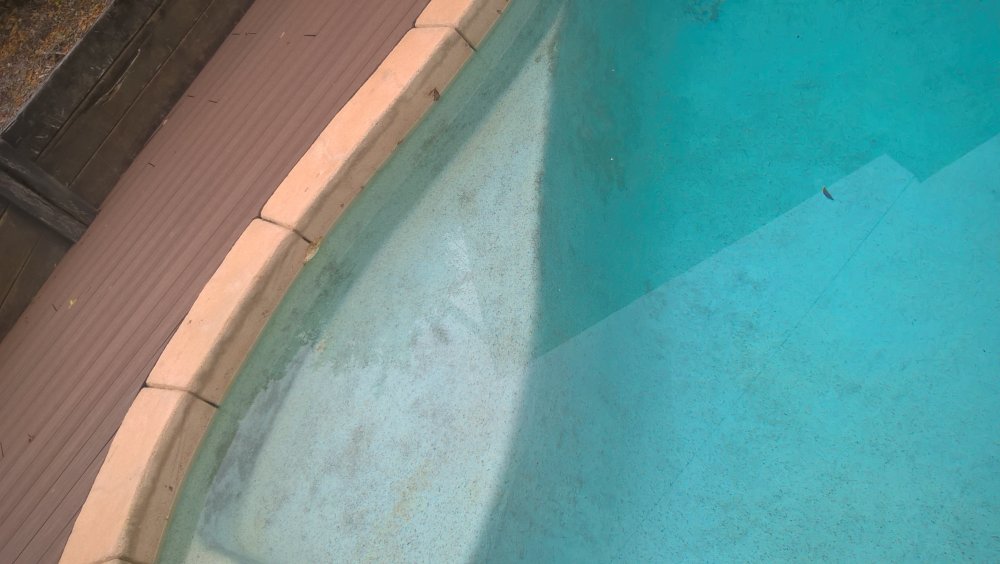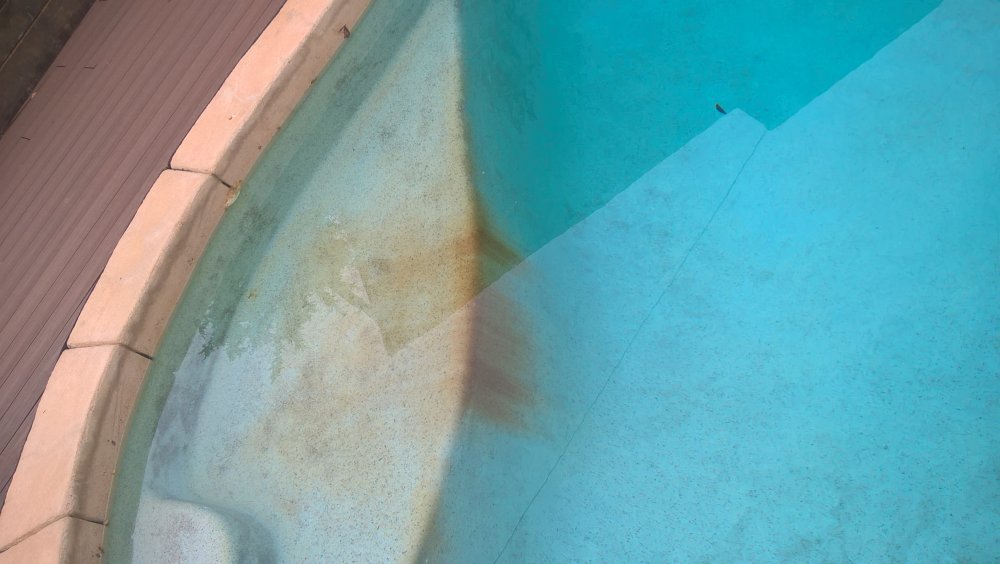

NotYou
-
Posts
18 -
Joined
-
Last visited
Content Type
Profiles
Forums
Events
Posts posted by NotYou
-
-
9 minutes ago, studiot said:
Here is a very simple calculation for the pH of 0.03M HCl in pure water.
Thanks for this extra info, Studiot. I haven't got there yet, but that is what I am looking to learn (and more).
0 -
2 minutes ago, studiot said:
it is not a proof.
It is a derivation to show where it comes from.
Sorry, didn't know what else to call it.
0 -
On 6/1/2021 at 7:35 AM, studiot said:
Vforward = Vreverse
What happens if Vforward≠Vreverse ??
0 -
On 6/1/2021 at 7:35 AM, studiot said:
Vforward = Vreverse
Which may be written
Vforward
Vreverse = 1It can also be written as:
1 = Vreverse
VforwardWhich becomes:
Kequilibrium = [A][ B] = kreverse
[C][D] kforwardHow will that change the rest of the proof?
0 -
On 6/5/2021 at 2:51 AM, exchemist said:
But tell me, does CRC or anyone else maintain an on-line version of the Rubber Book? It seems like an obvious thing to put into a web-accessible database.
I found it as PDF's at analysischamp.com/links2.html
0 -
On 6/2/2021 at 11:47 PM, exchemist said:
You can, if you know the dissociation constant as well.
Are these dissociation constants available for everything? Where would I find a list of them?? (Please don't say "Google it")
On 6/2/2021 at 8:13 PM, studiot said:very small proportion that is ionised
So that would mean that these dissociation constants are dependant on temperature and pressure? Is there a formula for that/them??
On 6/2/2021 at 11:47 PM, exchemist said:if you have a strong acid, such as HCl or HNO3, you can assume that it is fully dissociated (unless you are dealing with very high concentrations)
What happens when either are pure? Can they be pure??
0 -
2 hours ago, exchemist said:
You can't calculate it just from the chemical formula You get this from Kw, which is an experimentally determined figure.
Again: So it's impossible to find the pH of a solution given only the molecular concentrations!
0 -
This is where I get confused.
Given:
[H+][OH−]/[H2O]=1.8x10−16
[H+]=[OH−]=1.0x10−7And:
[H] = 992.1 m/l
[HO] = 58.8 m/l
[H2O] = 55.5 m/lHow can:
(992.1*58.8)/55.5 = 1.8x10−16 ?
992.1 = 58.8 = 1.0x10−7 ?0 -
12 hours ago, studiot said:
Note these are always experimentally determined values. They cannot be found from theory alone.
So it's impossible to find the pH of a solution given only the molecular concentrations?
0 -
Hi All,
This should be easy, but I can't seem to find it on the 'net.
I'm trying to get my head around calculating the pH of a solution given its chemical makeup. I had hoped that starting with something easy, like water, would help me.
But all the research and attempted calculations don't add up.
The equilibrium equation of water is Kw mol2 dm-6 = [H3O+]mol dm-3 [OH-]mol dm-3
I'm told that Kw is 1.0 x 10-14. (Why? Where did this come from? Was it just made up because the pH scale only goes to 14??)
I've calculated [H3O+] to be 19.02322 g/mol or 0.01902332 mol dm-3 and [OH-] is 17.00734 g/mol or 0.01700734 mol dm-3
First, do I have the correct values for [H3O+] and [OH-]?
Secondly, I can't balance the the equation as 10-14 ≠ 0.0003235360711688!
Where am I going wrong?
0 -
Can anyone provide the calculations to compensate for the Boron?
0 -
Thanks for the link exchemist,
However I know what Boron is used for. I just don't know if the Boron levels affects the amount of Hydrochloric Acid I require.
0 -
Hi All,
One of the pH adjustment programs I use takes the amount of Boron in the water into account. I'm not sure it matters - So I'd like to know if the Boron concentration in pool water affects the amount of Hydrochloric Acid required.
If so, how? Is there a formula I can use to adjust for the amount of Boron?
Thanks in advance,
Buddy.
0 -
I, too, suspect that it's iron stains. The stains sometimes appear at the spot where I pour the salt into the pools. The salt I use is highly refined pool salt - ultra-fine pure white crystalline salt. However I don't think they remove all the contaminants, too costly.
Here's what Fishel Pools says about pool salt:
QuoteWhy Is Salt Used in Pools?
You probably already know that chlorine is used to keep pools safe by disinfecting the water and killing disease-causing bacteria, algae, and other organic matter. Chlorine is necessary for a safe swimming environment, but in its liquid form, it can sometimes cause damaging side effects like skin irritation, stinging eyes, and brittle hair.
These days, many pools are equipped with a salt chlorine generator system (also known as a salt water chlorinator) instead. With this system, pool salt (NaCl, or sodium chloride) is dissolved into the water, and the mechanical system electrolyzes the salt and transforms the chloride portion of the salt into chlorine. This chlorine functions in the same way as traditional liquid chlorine, making it a great replacement for a vital piece of pool maintenance and sanitation. However, unlike liquid chlorine, chlorine electrolyzed from salt lacks a strong odor and it won’t lead to irritated eyes, dry skin, or green hair. Plus, it can decrease pool maintenance costs by as much as 80%! (source)
WHAT YOU NEED TO KNOW ABOUT SALT CHLORINE SYSTEMS
The salt that you add to your pool should be as pure as possible—you can purchase pool-grade sodium chloride specifically for this purpose. Also, you’ll be glad to know that the amount of salt added to a pool produces a concentration far less than the salt concentration of seawater (so when you exit the pool, your skin won’t have a salty residue). It is important, however, that you maintain the appropriate salt concentration to decrease the possibility of corrosion while still maintaining the pool’s cleanliness and sanitization.
I think you're right about the chelation, here's what I found at PubMed:
QuoteAscorbic acid and its metabolites, including the ascorbate anion and oxalate, have metal binding capacity and bind iron, copper and other metals. The biological roles of ascorbate as a vitamin are affected by metal complexation, in particular following binding with iron and copper. Ascorbate forms a complex with Fe3+ followed by reduction to Fe2+.
Amazing stuff, hey?
1 -
-
Hi All,
If I add Hydrochloric Acid to a pool, will the calcium hardness be lowered? If so, by how much - is there a formula I can use to calculate the final value?
Thanks in advance.
0 -
On 7/24/2013 at 4:09 AM, dirtyamerica said:
and don't forget to add the acid SLOWLY, not all at once!
I know this is an ooooold post, but why shouldn't one add all the required acid at once?
0



Finding pH of water
in Applied Chemistry
Posted
How can water be diluted?